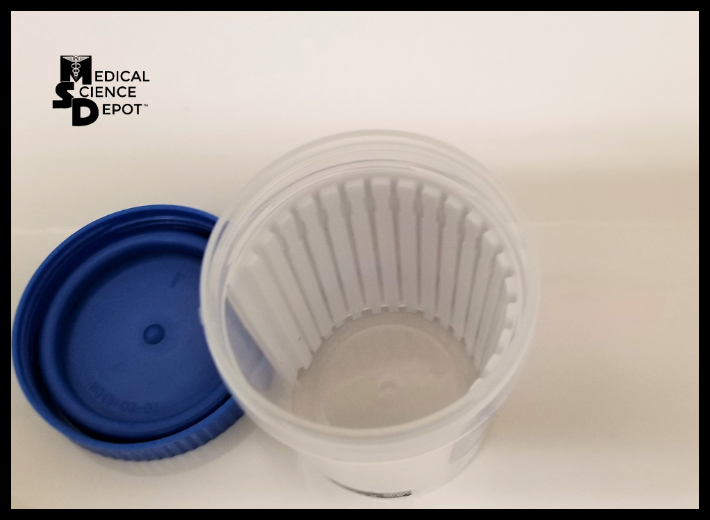Urinary drug testing (UDT) is becoming a standard practice in pain management to ensure patients are taking their medication as prescribed and to prevent misuse. By regularly checking for both prescribed drugs and illicit substances, healthcare providers can promote patient safety and effective pain management. This guide will delve into the significance of UDT, its advantages, and how it can improve patient outcomes.
Physicians have been forced to weigh professional risk in selecting a treatment modality when treating patients for chronic pain for fear of civil, administrative, or worse, criminal liability. Urinary drug testing is becoming the cheapest insurance for liability protection in clinical practice. The Federation of State Medical Boards (FSMB) adopted a policy for prescribing controlled substances stressing the critical importance in documenting, evaluating, and monitoring controlled substances in the management of pain patients. This is consistent with the guideline set forth by federal agencies including the Drug Enforcement Agency (DEA). Part of this policy — dealing with the implementation of monitoring drug compliance — is the regular use of UDT.
Clinically, the benefits of UDT are multiple. These include reducing the risk for toxicity in patients vulnerable to adverse drug effects, avoidance of medico-legal problems, detecting patient non-compliance, reducing the risk of therapeutic failure, and avoiding or detecting drug-drug interaction. Additionally, UDT enhances the physician’s ability to use drugs effectively and minimizes treatment costs.
Unfortunately, physicians have utilized UDT as a means of discharging patients from their practice. Urine drug testing should not be primarily used as a tool for protecting the doctor’s license or the pain clinic, but to enhance patient care. It has to be emphasized that the use of UDT is never intended to be punitive. It is a disservice to the medical profession for a patient to be discharged on the basis of a positive UDT. The presence of illicit substance in the urine indicates that the patient has a problem and therefore needs help and guidance from the clinician. Instead of discharging the patient from the practice, the patient should be offered help in the form of consultation and treatment with an addiction medicine specialist, psychiatrist or clinical psychologist specializing in the management of addiction, as well as enrollment in a recovery program. The patient should be managed by other means since there are a multitude of options available to treat chronic pain without necessarily using chronic opioid therapy.
The use of long term opioid therapy for chronic pain is now accepted as standard medical practice in patients with moderate to severe pain who failed to respond to more conservative therapy. Unfortunately, patient self-reporting of drug compliance is frequently unreliable and it becomes necessary to use “external” sources of information on patient drug use including pharmacy profiling, review of medical records, interview with family members, the use of some form of prescription monitoring program, and — more accurately — detecting the presence of drugs in the patient’s system using a variety of specimen such as saliva, blood, hair, and urine.
Urine is the standard body fluid tested for drug screening because it is readily available, it is easily collected, and it is easily handled by laboratory and office personnel. Urinary drug testing has been preferred over serum sampling because the period of detection of a particular drug in the urine is increased, while drugs and their corresponding metabolites may only be detectable in the serum for a short period of time. Urinary drug testing(UDT) is also less expensive and non-invasive compared to serum testing.
It has to be emphasized that the result of urine toxicology for the purpose of detecting patients who may be diverting, supplementing or abusing the prescribed drugs and other illicit substances are protected by the physician-patient confidentiality rule and the result of the test cannot be disseminated to other interested parties without the expressed consent of the patient.
Urine Drug Testing Methodology
There are two types of drug testing used in clinical practice. The first type is an immunoassay test. This test is approved by the United States Food and Drug Administration and is based on the principle of competitive binding. A known amount of antibody and an enzyme labeled drug or metabolite are added to the urine specimen. The drug or metabolite in the sample competes with the labeled drug or metabolite to bind antibody, forming an antigen-antibody complex. The amount of enzyme-labeled antigen that binds with the antibody is inversely proportional to the amount of drug or metabolite in the urine sample. The main advantage of immunoassay is allowing simultaneous and rapid testing of drugs in the urine. Immunoassays that are commonly used include radioimmunoassay, fluorescence polarization immunoassay, enzyme mediated imunoassay, and kinetic interaction of microparticles in solution.
The most sensitive and reliable of all immunoassay techniques in testing for abused drugs is the Fluorescence Polarization Immunoassay (FPIA). It has a lower level of quantification compared to the federally regulated concentration. Interference and tampering of specimens have found FPIA to be quite resistance to normal adulterating and tampering substances. The test detects the “Federal Five” drugs or drug classes that are tested in federal employees and federally regulated industries. The drug/class detected include marijuana, cocaine, opiates, phencyclidine (PCP), and amphethamines/methamphetamines. Additionally, it detects other substances such as benzodiazepines and barbiturates. However, there is no reliable relationship between the urine drug concentration and the doses taken of the prescribed drugs. Table 1 shows the comparative cutoff concentration between the standard (federally mandated) level and that of the Flourescence polarization immunoassay (FPIA).
Unfortunately, this test has a high false positive results because of structural similarities between a variety of drugs. Patients eating poppyseed-containing food such as cakes, bagels, rolls, Danish pastry, strudels, and muffins can have a false positive test for opioid because poppyseed contains a small amount of morphine. Sympathomimetic amines, such as ephedrine and pseudoephedrine as well as certain diet pills, can produce a false positive test for amphetamine. A false positive result for marijuana can be caused by dronabinol- and hemp-containing food. The primary metabolite of cocaine is benzoylecgonine. Both cocaine and its metabolite have a low cross-reactivity with other substances. A positive FPIA is highly predictive of cocaine use.
Immunoassays vary in the range of compounds detected — some detecting specific drugs, while others detect only classes of drugs. Urine drug concentration and the assay’s cutoff concentration also affect the sensitivity of the test. Higher drug concentration will produce a positive result but any concentration below cutoff is reported as negative. This test has a very low sensitivity for semisynthetic and synthetic opioids such as hydrocodone, oxycodone, fentanyl. Methadone and buprenorphine. Thus a negative immunoassay test for these substances does not exclude the use of these opioids. The use of immunoassay test alone in clinical practice is rarely sufficient since it does not consistently identify specific drug or metabolite but rather identifies a particular drug class. This test should be used as an initial screening tool, but a confirmatory test must be done when monitoring a patient compliance to drug therapy.
The confirmatory urinary drug test is laboratory-based and employs the principles of gas chromatography and mass spectrometry (GC/MS), or high performance liquid chromatography (HPLC). Gas chromatography/mass spectrometry (GC/MS) is considered to be the “gold standard” of urinary drug testing. The test is used to confirm the presence of a prescribed drug and to identify drugs not included in the screening test. The test is capable of detecting drugs and metabolites that may show a negative result during screening such as the synthetic and semisynthetic opioids.
Similar to the immunoassay, the only substance that can cause a false positive opioid result in GC/MS is poppyseed. Codeine and heroin are metabolized to morphine and can produce a false positive test. Demethylation of hydrocodone produces hydromorphone, thus a false positive result for the metabolite may be obtained following hydrocodone use. There is no cross-reaction of GC/MS testing for cocaine and any of the ester and amide local anesthetics. Secondary smoking or passive exposure to marijuana does not result in a positive test.
The ability to detect a specific drug concentration in the urine is determined by the time and duration the patient takes the drug, its pharmacokinetic properties, dose and route of administration, urine volume, and pH. Heroin is difficult to detect because it has a half life of 5 to 30 minutes while its metabolite, 6-acetylmorphine, has a half life of 45 minutes. Cannabinoids in the urine can be detected up to 80 days after cessation if the patient is a heavy and consistent user. A patient can be a rapid metabolizer and the urine drug test can be negative despite adherence and proper drug use. Table 2 shows the detection time of drugs in the urine.
Urinary drug testing is an important tool that a pain clinician can use for proper documentation of adherence to a treatment plan, diagnosis of drug abuse and addiction, uncovering trafficking and diversion, and as a requirement for initiation and continuation of long term opioid therapy. The use of urine drug testing may decrease the risk of drug misuse. When and how often to test a patient depends primarily on the clinical judgment of the pain specialist. Patients who refuse to undergo urinary drug screening are not candidates for chronic opioid therapy.
To improve the reliability of urinary drug testing, it is preferable to have the specimen collected at the clinic or in the hospital. Observation of the urine characteristics including color, temperature, ph, specific gravity, and urinary creatinine should be done. Some centers add color agents to the toilet to prevent urine dilution and hot water is unavailable to prevent urine tampering.
Conclusion
The routine use of urinary drug testing is becoming more common in the management of chronic pain. The use of an initial drug screen followed by the confirmatory test is a two step process used to improve patient care, monitor compliance, and detect drug misuse. Immunoassay — preferably flourescence polarization immunoassay — is the screening test of choice, followed by gas chromatography/mass spectrometry as the ‘gold standard’ for drug confirmation. The clinician must be aware of the pitfalls and limitation of each test and its proper interpretation. Clinical decision making basing on the result of the drug screen should take into consideration other pertinent clinical information. Drug testing should never be used as a punitive measure but rather to enhance patient care. Pain management practices are encouraged to use this technology, however, further data are needed to determine the impact of urinary drug testing in chronic pain management.
Ensure patient safety and compliance with reliable drug testing. Order your high-quality drug test kits today at 864.982.0460. We offer the best medical equipment for healthcare centers! Follow us on Instagram for the latest updates and industry insights.
Reference: [https://www.medcentral.com/pain/chronic/urinary-drug-testing-pain-management]














